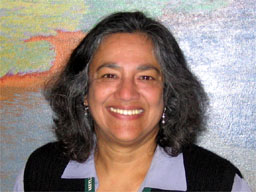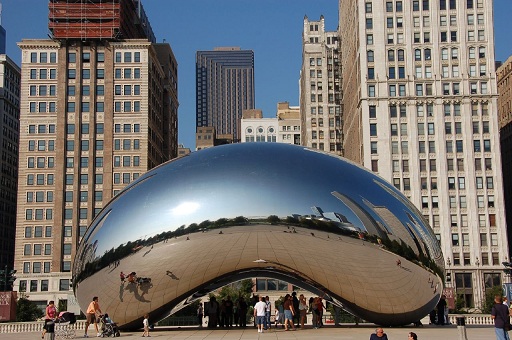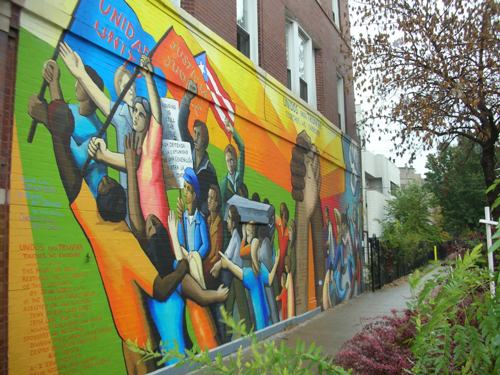Art, Public Space, and a “Just Aesthetic”
My title, and especially the concept of a “Just Aesthetic”, is attributable to Alaka Wali, Curator of North American Anthropology and Director of Applied Cultural Research in the Environment, Culture and Conservation Division at Chicago’s Field Museum. Yesterday Dr. Wali spoke at the University of Denver on the topic of “Civic Aesthetic and Difference: The Circulation of Art in Chicago’s Public Spaces.” Dr. Wali described an existing tension between the sponsors of formal, “urban chic” art (such as found in The Loop) and those beyond the Loop who produce gritty, grass roots, “chaotically-local” art. The former is intended to “brand” Chicago as a global city. The latter is used by resident, mostly minority group citizens to mark space and assert their ethnic identity. Some forms of this local, chaotic art is tolerated by city officials, while other forms are not. What’s at stake, at the end of the day, is the city’s commitment to a ‘just aesthetic’ that gives people the freedom to make urban place as they see fit; i.e., their aesthetic right to the city.
The forces producing this aesthetic tension in Chicago are many, but among them is gentrification. This process has dispersed ethnic peoples across the city and suburbs creating, in Dr. Wali’s words, a “patchwork of wealth and poverty.” Rather than lessening the salience of ethnicity in everyday life (as some might expect if people are being randomly dispersed across the city), this process has only increased it. The result is the intensified deployment by minority groups of several strategies aimed at asserting their space in the metropolis. Dr. Wali described these strategies as:
1. Aesthetic marking of difference: The use of visual culture, like murals, to mark space, e.g., those deployed by the Puerto Rican community in Humboldt Park.
2. Art-making in public spaces: The use of of public spaces like parking lots, parks, vacant lots, public libraries, and church basements as venues for activities like drumming circles, dance groups, community theatre, quilting clubs, etc.
3. Claiming space for informal economies: e.g., street performers, food trucks and carts, and vendors of other goods.
4. Performances of Resilience: activities that assert local cultural identity and pride, and public protests of the conditions that affect a neighborhood’s quality of life (crime, gentrification).
All of these strategies count among the tactics (perhaps most famously described as “weapons of the weak“) that disenfranchised, marginalized, and subaltern peoples have long used to assert power and resist majority-group domination. What’s compelling is Dr. Wali’s distinctive way of framing them. Dr. Wali has noticed an intensification of their use in the 15 years that she’s been living in Chicago. Some activities (like #2) enjoy very high rates of participation that cross-cut categories of age, occupation, and gender. Interethnic (or, intercultural) cross-cutting is still elusive, however. As noted above, some of this informal art-making is tolerated by civic authorities while other forms are thwarted by official interventions such as the levying of licensing fees to sell street food and other goods, and the denial of parade permits. Certainly, there is little to no official effort to support local art-making in ways that would reinforce the distinctly urban cultural character of individual neighborhoods. My question to Dr. Wali in the Q&A session about whether there was any relationship between local artists and Occupy Chicago activists was treated as a good one that couldn’t be answered—perhaps indicating yet another missed opportunity for that movement to join with others to realize its insurgent goals.
At best, the local art-makers have attracted the attention of civic authorities. The new 2012 Chicago Cultural Plan (scheduled for fall release) aims to “identify opportunities for arts and cultural growth for the city.”` Input about ways to secure the cultural future of the city will be solicited from residents and stakeholders in Town Halls held in each of the city’s 50 wards. New art districts for mixed income areas is imagined. More opportunities may emerge if certain other enabling conditions can be put in place, such as greater diversity on the boards of the city’s cultural institutions. Until then a “just aesthetic” is likely to remain more a hope than a reality, in Chicago and elsewhere.



Leave a Reply